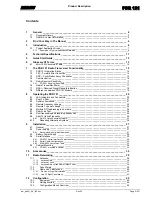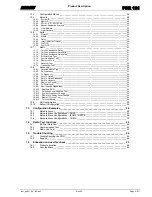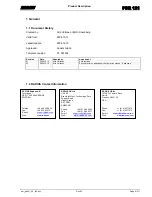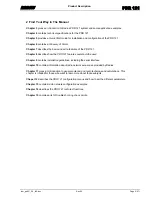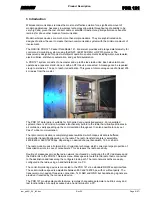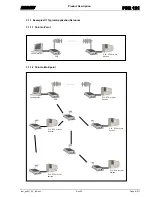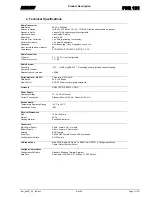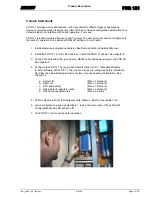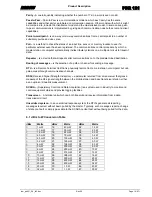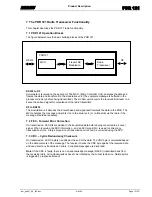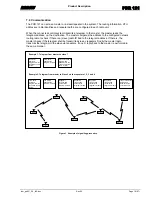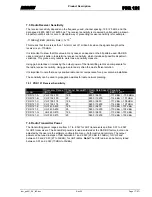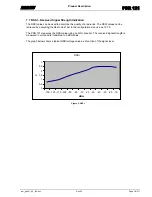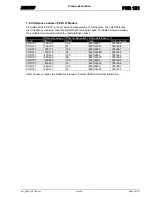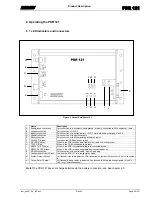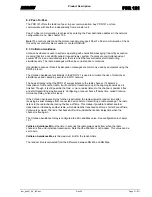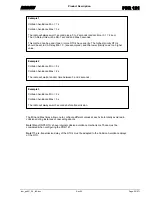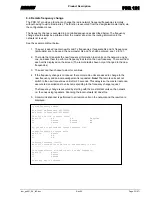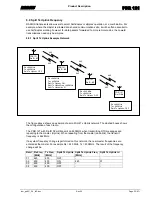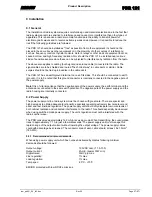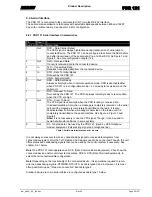
RADIUS
Product
Description
PDR 121
iom_pdr121_04_r02.doc
Rev 02
Page 14 (67)
Parity –
A one-bit quantity indicating whether the number of 1’s in a word is even or odd.
Peer-to-Peer –
Peer-to-Peer is a communications model in which each party has the same
capabilities and either party can initiate a communication session. Other models with which it might
be compared to, include the client/server model and the master/slave model. In some cases, peer-
to-peer communications is implemented by giving each communication node both server and client
capabilities.
Point-to-multipoint
– is
one-way or two-way communications from a central point to a number of
subsidiary points, and vice versa.
Poll –
is a method to check the status of an input line, sensor, or memory location to see if a
particular external event has been registered. The communications control procedure by which a
master station or computer systematically invites tributary stations on a multipoint circuit to transmit
data.
Repeater
– is a device that will repeat serial communications on to the predetermined destination.
Routing of messages –
is the selection of a path or channel for sending a message.
RTU –
is
a Remote Terminal Unit that is physically remote from a main station or computer but can
gain access through communication channels.
RSSI
(Received Signal Strength Indication)
–
a parameter returned from a transceiver that gives a
measure of the RF signal strength between the mobile station and base transceiver station, either
as an uplink or downlink measurement.
SCADA –
(Supervisory Control and Data Acquisition) is a system used in industry to monitor and
control equipment status and provide logging facilities.
Transceiver
– A terminal unit which can both transmit and receive information from a data
transmission circuit.
Unsolicited system
–
In an unsolicited
response system, the RTU’s generate all reporting
messages required, without beein polled by the master. Typically, such messages report a change
of state or a fault, or simply pass data to the SCADA central host without being polled for the data.
6.1 dBm to W Conversion Table
dBm
Watts
dBm
Watts
dBm
Watts
0
1 mW
16
40 mW
32
1.6 W
1
1.3 mW
17
50 mW
33
2.0 W
2
1.6 mW
18
63 mW
34
2.5 W
3
2.0 mW
19
79 mW
35
3.2 W
4
2.5 mW
20
100 mW
36
4.0 W
5
3.2 mW
21
126 mW
37
5.0 W
6
4 mW
22
158 mW
38
6.3 W
7
5 mW
23
200 mW
39
8.0 W
8
6 mW
24
250 mW
40
10 W
9
8 mW
25
316 mW
41
13 W
10
10 mW
26
398 mW
42
16 W
11
13 mW
27
500 mW
43
20 W
12
16 mW
28
630 mW
44
25 W
13
20 mW
29
800 mW
45
32 W
14
25 mW
30
1.0 W
46
40 W
15
32 mW
31
1.3 W
47
50 W


